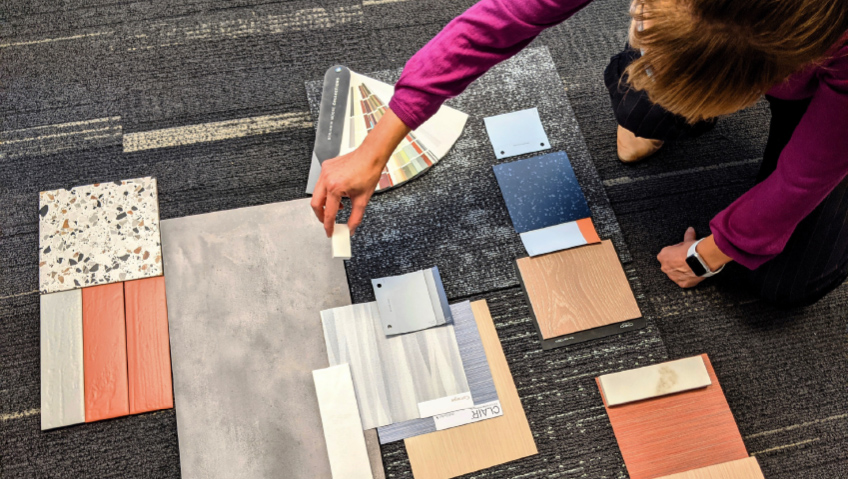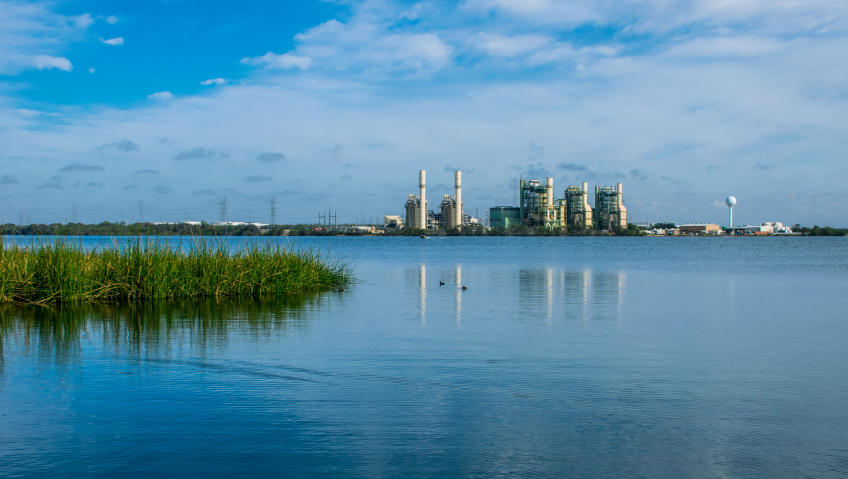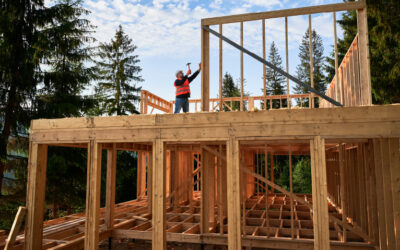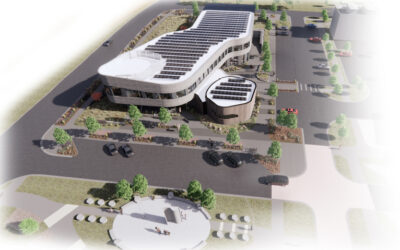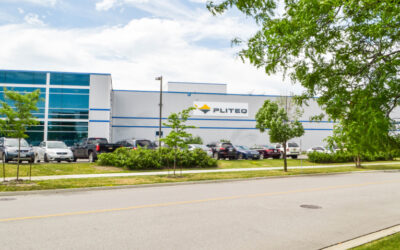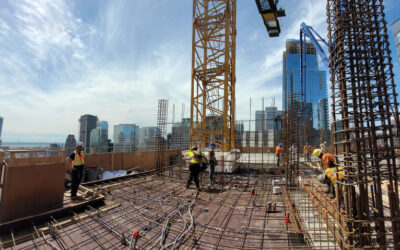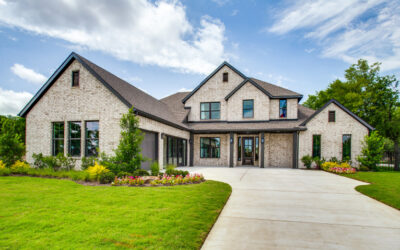A full-service, woman-owned firm offering architectural, engineering, planning, and interior design services, Bailey Edward places a strong focus on sustainability, well-being, and health in order to create distinctive, responsive designs that connect on all levels. Embracing the ecology of sites and places along with the people occupying them, the company strives to learn about and comprehend each challenge by incorporating skills, knowledge, and enthusiasm to improve the built environment to benefit society.
Providing a variety of services for clients, the company currently has projects totaling more than five million square feet and $1.11 billion in anticipated construction costs. Founded in Chicago, Illinois in 1991 by Ellen Bailey Dixon, Bailey Edward recently celebrated its 30th anniversary and has proudly grown to a staff of more than 60 people.
“Our industry is male-dominated, so the ability to work and have a woman-owned firm is really fantastic,” says Susan Hickey, Senior Architect. “In regards to our presence, I think it allows us to give a diverse voice in regards to our design.”
The company also maintains a strong presence in diverse community organizations that it supports. “We also have a strong mentorship program where we support younger staff and guide them in regards to both design and construction,” adds Hickey.
Enticing skilled, younger employees—especially women—into the industry can be challenging, so Bailey Edward strives to show women what a great career it can be.
“Ellen is an amazing role model,” says Hickey. “As for our senior leadership, we have several women as part of that, and they’re also amazing role models, right out there rubbing elbows with everyone else.”
Ania Breau, Senior Interior Designer, agrees that having so many inspiring women in leadership roles helps to set the company apart. “And not only are there women, there are a lot of parents,” she says. “Sometimes in the architecture and design community, it’s hard to find really good work-life balance and squeeze in the whole concept of being a parent.”
The firm excels at promoting that work-life balance by encouraging employees to advocate for themselves, talking to their project managers about balancing their workload and life the way they want to, she adds. “We have a flexible work environment where we’ve had staff that have worked from a daycare facility where they were able to work and take care of their kids at the same time, which I think is just fantastic. I’m seeing that trend in the community.”
When it comes to promoting the industry to a younger generation, several Bailey Edward employees have taught at the university level and have gotten involved in the community, inspiring groups, such as the Girl Scouts and the Girls Build program at the Chicago Architectural Center, to pursue architecture in the future. Whether it’s for grade school or high school students, there is a mentoring program that the company supports.
Sharing the many benefits of a career in the industry is something all Bailey Edward employees strive to do—and there are plenty of reasons why it’s a great career to pursue.
“It’s ever-changing,” Hickey says. “We’re always addressing different issues and different concerns, including sustainability and wellness, and that’s just one example of how things are evolving.”
Environmental stewardship is similarly important to Bailey Edward, with the goal of focusing both on individuals and also the planet as a whole.
“We’re looking at making our spaces that we design as healthy as possible, but also being sustainable at the same time,” Breau says. “We have an environmental stewardship group that Susan and I are both a part of, and what we’re trying to do is bring ideas from all the various healthy building environmental stewardship certifications and guidelines to all of our projects. So we look at LEED, Fitwel, and try to bring all those concepts into our projects.”
Even though not every single project aims for certification, the company still wants to ensure it’s incorporating those concepts into its projects. “The interiors group as a whole has gone through our design library and removed everything that’s not healthy,” says Breau. “We’re really trying not to use vinyls and trying to focus on items that are not on the Red List. We’re just trying to be as healthy as possible.”
This commitment to sustainability within projects is even more vital as the movement continues to gain ground across the industry. In the Chicago market specifically it’s almost a standard, says Breau, as a lot of firms are incorporating sustainability as best practice.
“In the past there may have been the desire to have a certain LEED rating or a certain rating, and the client may know about it,” Hickey adds. “I think what’s changed in the past couple of years is it’s being driven by broader thinking either within the corporation or within the institution.”
The client institution or corporation will have a master plan or a series of sustainable goals which are holistic, and that’s how those projects fit within it. They’re not just one-off projects, but part of their broader vision, and the approach taken really depends on the client, says Breau. “I feel like there are a lot of organizations that are really at the forefront of [sustainability]. We work a lot with the GSA (General Services Administration), and they have incorporated so many standards,” she says. “They really lead the charge on Fitwel. The Chicago public schools also have so many healthy materials as their standard, which is always great to see.”
One of the projects both Hickey and Breau are working on, which they describe as an “amazing journey,” is at the University of Illinois Urbana-Champaign, called the Doris Kelley Christopher Illinois Extension Center. Bailey Edward is working with a master plan that has set goals to achieve net zero as soon as possible for the university.
“For this building in particular, we’re focused on having a zero energy building, and then looking at net zero carbon too,” says Hickey. “That has been part of our process from day one on the project. Right now we’re tracking LEED Gold on the project.”
Another notable project is the University of Chicago Medicine Comprehensive Cancer Center, the first freestanding cancer pavilion in the Chicago area, due to be built or completed in 2027. Although still a ways out, groundbreaking took place not long ago.
“We’re responsible for the clinical interiors for the project, and one of the goals for us is to not use any cancer causing materials on the project,” says Breau. “All the materials we’re utilizing in the project are healthy for people going through the cancer journey. We’re really excited about it. It’s going to be a great space.”
While there has been much movement in the industry toward producing materials that are healthy and sustainable, they are still just a small percentage of what’s out there. So by specifying materials that are more sustainable and healthy for building occupants, Bailey Edward hopes to encourage more such products in the marketplace. “There are quite a few manufacturers out there doing a great job at it, producing things like carbon-negative carpets and PVC-free floors, but we would love it if every manufacturer got on board,” Breau says.
All of this impactful work has led to the company being named one of Crain’s Best Places to Work for the second year in a row. With emphasis placed on collaboration, communication, and community, the company is the highest-rated Architecture and Planning company in Chicago.
“I think it’s because of our broader mission as being inclusive and looking for healthy places to work,” Hickey says. “We have different working groups within our firm like environmental stewardship, but we also have others where we have discussions in regards to being inclusive and what does that mean? Or what does it mean to be diverse? So there’s a constant conversation in regards to how we can be better.”
Future goals include focusing further on environmental stewardship, says Breau, along with making sure different voices are heard. “Our firm as a whole is always wavering around 50 percent women to men, so we’re always trying to make sure there’s representation.”
The company also prides itself on being an active listener with the client. “One of the things we talk about when we talk to our clients is we have a broad range of knowledge and expertise,” says Hickey. “As a firm, we touch a lot of different market sectors and practice areas.”
For instance, the company has rich expertise in historic preservation, which supports its goals of sustainability. Such projects provide a new use for what already exists. “It may be landmark, and how do we modernize it without compromising its significance?” Hickey says. “We track metrics regarding that, and how much energy we save, so we understand how well our projects are performing.”
Bailey Edward also sets itself apart from other firms by exposing all employees to work in diverse sectors rather than in specific silos. “We all get to dip our fingers into different sectors, which makes it really fun and exciting for people to gain knowledge in every single sector,” says Breau.
Through putting teamwork and professional growth first, Bailey Edward has created a culture of pride and belonging, where employees are encouraged to explore a diverse range of projects and gain experience in the areas that most interest them. These are all qualities that the company aims to share with those searching for a career in a respected and exciting field.
“It’s the ability to do something that you’re passionate about, the ability to be creative every day,” says Breau. “But for those people that want to be a little bit more technical, there’s obviously a lot of that, too. I think it’s just such a great field to get into.”

